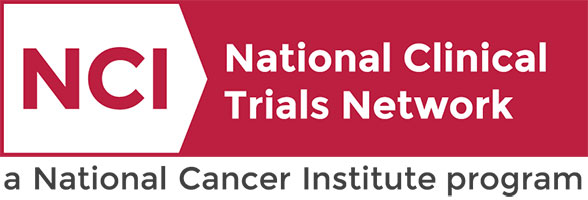Patient Search
 |
 |
|
KaCrole Higgins was diagnosed with breast cancer in 2020. “In May 2020, I found a lump in my breast. I cried. By June, it was diagnosed as breast cancer, triple positive, stage 1A. While getting this cancer diagnosis was devastating, it also became an opportunity. Suddenly, the cancer gave me clarity. It gave me clarity about what was important, what was good in my life, what was toxic in my life, and what I needed to do.” Click below to read more of KaCrole’s story |
If Landon Ryan had been diagnosed with bilateral retinoblastoma 10, 20 or 30 years ago, she might not be here today with nearly perfect vision.Thanks to recent improvements in the treatment for this rare form of cancer that almost exclusively affects children under the age of 5, the diagnosis had the power to change Landon’s life when she was 11 months old, but not to take it — or her eyesight. Click below to learn more about Landon and her story. https://momentum.vicc.org/2022/04/brighter-outlook/ |
Testing the Use of Combination Therapy in Adult Patients with Newly Diagnosed Multiple Myeloma, the EQUATE Trial
Multiple Myeloma
Multiple Myeloma
This phase III trial compares the combination of four drugs (daratumumab-hyaluronidase, bortezomib, lenalidomide and dexamethasone) to the use of a three-drug combination (daratumumab-hyaluronidase, lenalidomide and dexamethasone) in patients with newly diagnosed multiple myeloma. Bortezomib may stop the growth of cancer cells by blocking some of the enzymes needed for cell growth. Chemotherapy drugs, such as lenalidomide, work in different ways to stop the growth of cancer cells, either by killing the cells, by stopping them from dividing, or by stopping them from spreading. Daratumumab-hyaluronidase is a monoclonal antibody that may interfere with the ability of cancer cells to grow and spread. Anti-inflammatory drugs, such as dexamethasone lower the bodys immune response and are used with other drugs in the treatment of some types of cancer. Adding bortezomib to daratumumab-hyaluronidase, lenalidomide, and dexamethasone may be more effective in shrinking the cancer or preventing it from returning, compared to continuing on a combination of daratumumab-hyaluronidase, lenalidomide, and dexamethasone in patients with newly diagnosed multiple myeloma.
Multiple Myeloma
III
Baljevic, Muhamed
NCT04566328
ECOGPCLEAA181
Lower-Dose Chemoradiation in Treating Patients with Early-Stage Anal Cancer, the DECREASE Study
Rectal
Rectal
This phase II trial studies how well lower-dose chemotherapy plus radiation (chemoradiation) therapy works in comparison to standard-dose chemoradiation in treating patients with early-stage anal cancer. Drugs used in chemotherapy, such as mitomycin, fluorouracil, and capecitabine, work in different ways to stop the growth of tumor cells, either by killing the cells, by stopping them from dividing, or by stopping them from spreading. Radiation therapy uses high-energy x-rays to kill tumor cells and shrink tumors. Giving chemotherapy with radiation therapy may kill more tumor cells. This study may help doctors find out if lower-dose chemoradiation is as effective and has fewer side effects than standard-dose chemoradiation, which is the usual approach for treatment of this cancer type.
Rectal
II
Eng, Cathy
NCT04166318
ECOGGIEA2182
Chemotherapy for the Treatment of Patients with Newly Diagnosed Very Low-Risk and Low Risk Fusion Negative Rhabdomyosarcoma
Pediatrics
Pediatrics
Rhabdomyosarcoma is a type of cancer that occurs in the soft tissues in the body. This phase III trial aims to maintain excellent outcomes in patients with very low risk rhabdomyosarcoma (VLR-RMS) while decreasing the burden of therapy using treatment with 24 weeks of vincristine and dactinomycin (VA) and examines the use of centralized molecular risk stratification in the treatment of rhabdomyosarcoma. Another aim of the study it to find out how well patients with low risk rhabdomyosarcoma (LR-RMS) respond to standard chemotherapy when patients with VLR-RMS and patients who have rhabdomyosarcoma with DNA mutations get separate treatment. Finally, this study examines the effect of therapy intensification in patients who have RMS cancer with DNA mutations to see if their outcomes can be improved.
Pediatrics
III
Borinstein, Scott
NCT05304585
COGARST2032
Testing the use of Ado-Trastuzumab Emtansine Compared to the Usual Treatment (Chemotherapy with Docetaxel plus Trastuzumab) for Recurrent, Metastatic, or Unresectable HER2-Positive Salivary Gland Cancer
Head/Neck
Head/Neck
This phase II trial compares the effect of usual treatment of docetaxel chemotherapy plus trastuzumab, to ado-emtansine (T-DM1) in patients with HER2-positive salivary gland cancer that has come back (recurrent), that has spread from where it first started (primary site) to other places in the body, or cannot be removed by surgery (unresectable). Trastuzumab is a form of targeted therapy because it works by attaching itself to specific molecules (receptors) on the surface of cancer cells, known as HER2 receptors. When trastuzumab attaches to HER2 receptors, the signals that tell the cells to grow are blocked and the cancer cell may be marked for destruction by body's immune system. Trastuzumab emtansine contains trastuzumab, linked to a chemotherapy drug called emtansine. Trastuzumab attaches to HER2 positive cancer cells in a targeted way and delivers emtansine to kill them. Docetaxel is in a class of medications called taxanes. It stops cancer cells from growing and dividing and may kill them. Trastuzumab emtansine may work better compared to usual treatment of chemotherapy with docetaxel and trastuzumab in treating patients with recurrent, metastatic or unresectable salivary gland cancer.
Head/Neck
II
Choe, Jennifer
NCT05408845
NRGHN010
Testing the Use of Steroids and Tyrosine Kinase Inhibitors with Blinatumomab or Chemotherapy for Newly Diagnosed BCR-ABL-Positive Acute Lymphoblastic Leukemia in Adults
Leukemia
Leukemia
This phase III trial compares the effect of usual treatment of chemotherapy and steroids and a tyrosine kinase inhibitor (TKI) to the same treatment plus blinatumomab. Blinatumomab is a Bi-specific T-Cell Engager (BiTE) that may interfere with the ability of cancer cells to grow and spread. The information gained from this study may help researchers determine if combination therapy with steroids, TKIs, and blinatumomab work better than the standard of care.
Leukemia
III
Mohan, Sanjay
NCT04530565
ECOGHEMEA9181
Testing What Happens When an Immunotherapy Drug (Pembrolizumab) is Given by Itself Compared to the Usual Treatment of Chemotherapy with Radiation after Surgery for Recurrent Head and Neck Squamous Cell Carcinoma
Head/Neck
Head/Neck
This phase II trial studies the effect of pembrolizumab alone compared to the usual approach (chemotherapy [cisplatin and carboplatin] plus radiation therapy) after surgery in treating patients with head and neck squamous cell carcinoma that has come back (recurrent) or patients with a second head and neck cancer that is not from metastasis (primary). Radiation therapy uses high energy radiation or protons to kill tumor cells and shrink tumors. Cisplatin is in a class of medications known as platinum-containing compounds. It works by killing, stopping or slowing the growth of cancer cells. Carboplatin is also in a class of medications known as platinum-containing compounds. It works in a way similar to the anticancer drug cisplatin, but may be better tolerated than cisplatin. Carboplatin works by killing, stopping or slowing the growth of cancer cells. Immunotherapy with monoclonal antibodies, such as pembrolizumab, may help the body's immune system attack the cancer and may interfere with the ability of tumor cells to grow and spread. Giving pembrolizumab alone after surgery may work better than the usual approach in shrinking recurrent or primary head and neck squamous cell carcinoma.
Head/Neck
II
Choe, Jennifer
NCT04671667
ECOGHNEA3191
Testing the Use of Investigational Drugs Atezolizumab and/or Bevacizumab with or without Standard Chemotherapy in the Second-Line Treatment of Advanced-Stage Head and Neck Cancers
This phase II/III compares the standard therapy (chemotherapy plus cetuximab) versus adding bevacizumab to standard chemotherapy, versus combination of just bevacizumab and atezolizumab in treating patients with head and neck cancer that has spread to other places in the body (metastatic or advanced stage) or has come back after prior treatment (recurrent). Immunotherapy with monoclonal antibodies, such as atezolizumab, may help the body's immune system attack the cancer, and may interfere with the ability of tumor cells to grow and spread. Bevacizumab is in a class of medications called antiangiogenic agents. It works by stopping the formation of blood vessels that bring oxygen and nutrients to tumor. This may slow the growth and spread of tumor. Cetuximab is in a class of medications called monoclonal antibodies. It binds to a protein called EGFR, which is found on some types of cancer cells. This may help keep cancer cells from growing. Cisplatin and carboplatin are in a class of chemotherapy medications known as platinum-containing compounds. They work by killing, stopping, or slowing the growth of cancer cells. Docetaxel is in a class of chemotherapy medications called taxanes. It stops cancer cells from growing and dividing and may kill them. The addition of bevacizumab to standard chemotherapy or combination therapy with bevacizumab and atezolizumab may be better than standard chemotherapy plus cetuximab in treating patients with recurrent/metastatic head and neck cancers.
Not Available
II/III
Choe, Jennifer
NCT05063552
ECOGHNEA3202
A Study of a New Way to Treat Children and Young Adults with a Brain Tumor Called NGGCT
Multiple Cancer Types
This phase II trial studies the best approach to combine chemotherapy and radiation therapy (RT) based on the patients response to induction chemotherapy in patients with non-germinomatous germ cell tumors (NGGCT) that have not spread to other parts of the brain or body (localized). This study has 2 goals: 1) optimizing radiation for patients who respond well to induction chemotherapy to diminish spinal cord relapses, 2) utilizing higher dose chemotherapy followed by conventional RT in patients who did not respond to induction chemotherapy. Chemotherapy drugs, such as carboplatin, etoposide, ifosfamide, and thiotepa, work in different ways to stop the growth of tumor cells, either by killing the cells, by stopping them from dividing, or by stopping them from spreading. Radiation therapy uses high energy x-rays or high-energy protons to kill tumor cells and shrink tumors. Studies have shown that patients with newly-diagnosed localized NGGCT, whose disease responds well to chemotherapy before receiving radiation therapy, are more likely to be free of the disease for a longer time than are patients for whom the chemotherapy does not efficiently eliminate or reduce the size of the tumor. The purpose of this study is to see how well the tumors respond to induction chemotherapy to decide what treatment to give next. Some patients will be given RT to the spine and a portion of the brain. Others will be given high dose chemotherapy and a stem cell transplant before RT to the whole brain and spine. Giving treatment based on the response to induction chemotherapy may lower the side effects of radiation in some patients and adjust the therapy to a more efficient one for other patients with localized NGGCT.
Germ Cell (Pediatrics),
Pediatrics
II
Esbenshade, Adam
NCT04684368
COGACNS2021
A Study of the Drugs Selumetinib versus Carboplatin/Vincristine in Patients with Neurofibromatosis and Low-Grade Glioma
Multiple Cancer Types
This phase III trial studies if selumetinib works just as well as the standard treatment with carboplatin/vincristine (CV) for subjects with NF1-associated low grade glioma (LGG), and to see if selumetinib is better than CV in improving vision in subjects with LGG of the optic pathway (vision nerves). Selumetinib is a drug that works by blocking some enzymes that low-grade glioma tumor cells need for their growth. This results in killing tumor cells. Drugs used as chemotherapy, such as carboplatin and vincristine, work in different ways to stop the growth of tumor cells, either by killing the cells, by stopping them from dividing, or by stopping them from spreading. It is not yet known whether selumetinib works better in treating patients with NF1-associated low-grade glioma compared to standard therapy with carboplatin and vincristine.
Neuro-Oncology,
Pediatrics
III
Pastakia, Devang
NCT03871257
COGACNS1831
A Study of the Drugs Selumetinib vs. Carboplatin and Vincristine in Patients with Low-Grade Glioma
Multiple Cancer Types
This phase III trial compares the effect of selumetinib versus the standard of care treatment with carboplatin and vincristine (CV) in treating patients with newly diagnosed or previously untreated low-grade glioma (LGG) that does not have a genetic abnormality called BRAFV600E mutation and is not associated with systemic neurofibromatosis type 1. Selumetinib works by blocking some of the enzymes needed for cell growth and may kill tumor cells. Carboplatin and vincristine are chemotherapy drugs that work in different ways to stop the growth of tumor cells, either by killing the cells or by stopping them from dividing. The overall goal of this study is to see if selumetinib works just as well as the standard treatment of CV for patients with LGG. Another goal of this study is to compare the effects of selumetinib versus CV in subjects with LGG to find out which is better. Additionally, this trial will also examine if treatment with selumetinib improves the quality of life for subjects who take it.
Neuro-Oncology,
Pediatrics
III
Pastakia, Devang
NCT04166409
COGACNS1833



